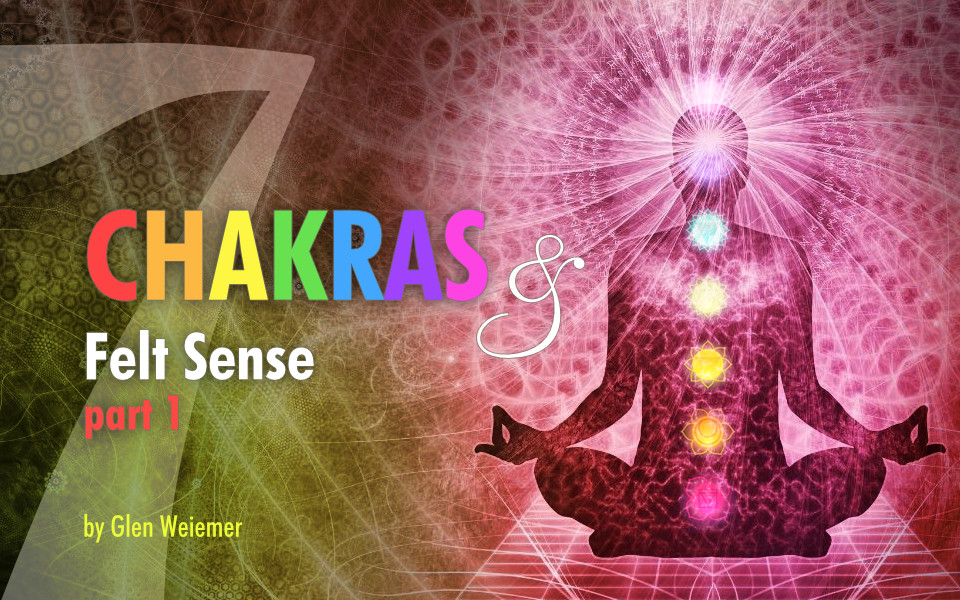The Chakras occupy a rarefied space in many people’s thinking of esoteric spirituality, new age ideas, metaphysics, and occult practices. When considering them people tend to fall into one of three camps: either they’re ALL IN and get the whole Energy/Chi world-view and everything that goes with it, OR they write it off as pseudo-science mumbo-jumbo with no basis in reality, OR they’re open to the idea, but don’t know enough and it seems like something only meta-humans with super-powers can see and interact with.
I’d like to present the 7-Chakras in a way that many may not have considered — the chakras as a language for expressing a body-centered universal human experience. I think THIS is what makes the concept of the chakras so ubiquitous around our planet. Often when I speak to my clients about chakras it’s from this vantage point, which I find makes it accessible and relevant to our everyday life and health.
Felt-Sense Experience
I need to start by defining what I mean by Felt-Sense. The term comes out of recent developments in somatic or body-centered psychology. Typically, when speaking about our life we focus on one of two things: our thoughts or our feelings — because what else is there?
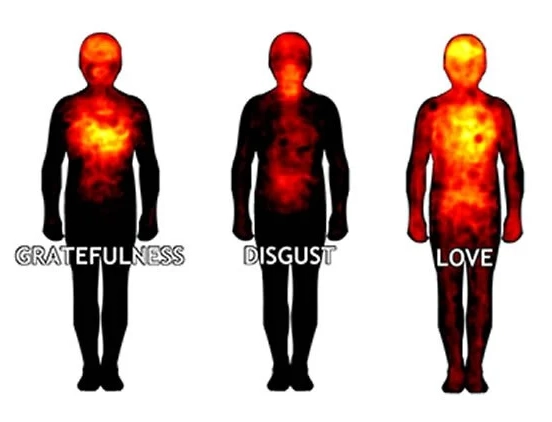 Our thoughts are connected to the story of our lives; what happened, when did it happen, who did what to who. Our feelings on the other hand are the emotions we attach to that story: happy, angry, sad, afraid.
Our thoughts are connected to the story of our lives; what happened, when did it happen, who did what to who. Our feelings on the other hand are the emotions we attach to that story: happy, angry, sad, afraid.
The third thing, that most of us don’t consider or even know exists, is our felt-sense which is how we experience all of life, and particularly our thoughts and feelings, in our bodies.
We so often live in our heads, that many of us have little to no body awareness. We don’t pay attention to any of the signals unless they’re screaming at us. So what I’m about to say may seem a little alien. I know this because every day I ask clients on my bodywork table what they are noticing in their bodies. The most common response is, “Nothing!”
That’s actually an impossibility! There is the respiration of the lungs, with air passing in and out of the nostrils, and the rising and falling of the chest, just to name a few obvious ones. Additionally, every one of us has major and minor strains and pains vying for our attention all the time. The truth is THIS is one of those aspects of reality we’ve been trained to ignore. Or we’re trying to ignore.
When I ask this, I keep the question very open, so clients can respond in any way, from, “I’m starting to relax”, to “I feel something in my shoulder when you’re working on my hip”, to “I was remembering when I was a kid and fell off my bike”, “My mind’s been wandering in a dreamlike state” or “there’s a blue light and the angels are talking to me.” The most important thing to me is to make my clients aware and validate their internal reality. No matter how ‘unrelated’ what they say may seem on the surface, it is always directly relevant to what I am working with. The body IS the unconscious mind, so tuning in to it, automatically brings us into a dreamlike state that can call to the surface stream-of-consciousness associations.
“FELT SENSES ARE paradoxical. In a way they are always there, but since we rarely notice them, they are also not there. When we first bring attention into the body and sense for “something”, we may notice nothing at all. Or we may sense that something is present in a bodily felt way, but it is vague, subtle, murky. In learning to find the felt sense, we have to learn to differentiate it from more common modes of experience: physical sensations, thoughts, and emotions.”
“… felt senses are different from the common emotions that … have names like anger, fear, happiness, and sadness. Nonetheless, felt senses can be described with words, if instead of using nouns we use adjectives.” ~ David I. Rome, Your Body Knows the Answer
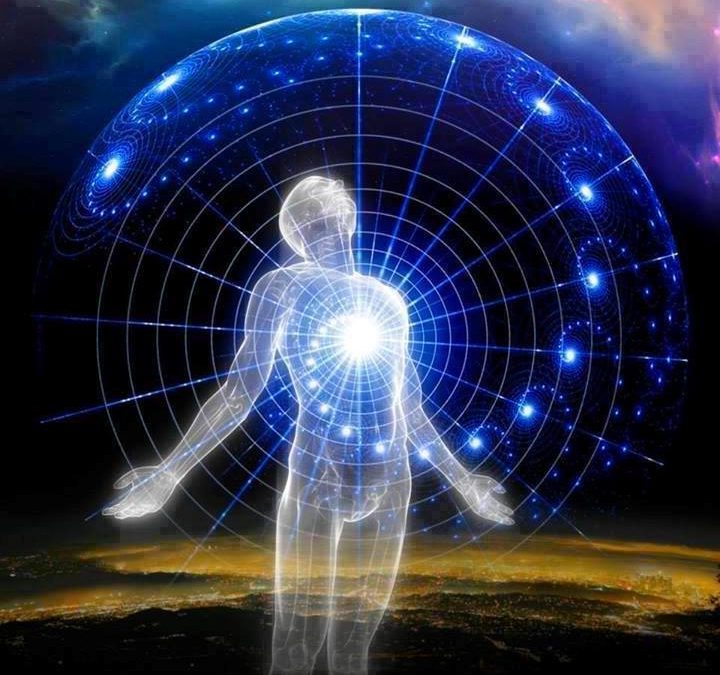 If I have 10 people in a room who identify themselves as HAPPY, and I ask them how they know they’re happy or experience happiness in their bodies; each will express that uniquely. One may describe an upwelling in his chest, another an effervescence bubbling up inside, and a third may just have a huge smile she can’t suppress.
If I have 10 people in a room who identify themselves as HAPPY, and I ask them how they know they’re happy or experience happiness in their bodies; each will express that uniquely. One may describe an upwelling in his chest, another an effervescence bubbling up inside, and a third may just have a huge smile she can’t suppress.
In general, what we classify as ‘good’ or ‘positive emotions’ tend to be accompanied by an uplifting and expansive sensation in our bodies; while ‘negative feelings’ have a sense of contraction and downward motion, or else they pull at us in multiple directions at once, or we experience an inner activation without release, like an intense static charge.
In truth, it may be that we care less about either our stories or emotions and more about how we experience those internally, how it disturbs our peace. Whereas our thoughts and emotions can feel beyond our control, our felt-sense gives us a tangible ‘something’ to work with directly. When we focus our attention on the body sensations, we can affect them by physically moving our bodies, or transform them from the inside using the very adjectives and imagery they provide.
7 Chakras & the Heart
So how does this relate to the chakras? Even though our felt-senses are unique to us individually, the chakras describe common universal perceptions that cut across culture, religion, upbringing, or personal history.
Falling in love, for example, is accompanied by an intense upwelling of energy in the center of our chest that is hard to contain. We may also feel like dancing or floating or many other things, but the central focus of this body sensation is in, what is identified as, the Heart Chakra (chakra meaning wheel or spinning vortex of energy).
The intensity of our love can cause these body sensations to range from a soothing pervasive warmth filling our chest, to a burning intensity that can be almost too much to handle, like our heart is ready to leap out of our chest.
 On the other hand, the unexpected loss of a loved one or breakup of a relationship is often accompanied by intense pain in this Heart Chakra. It can include an intense contraction, compression, and depression within the chest. When this sensation is overwhelming we may busy or distract ourselves so as not to feel these sensations.
On the other hand, the unexpected loss of a loved one or breakup of a relationship is often accompanied by intense pain in this Heart Chakra. It can include an intense contraction, compression, and depression within the chest. When this sensation is overwhelming we may busy or distract ourselves so as not to feel these sensations.
The tissue field of the chest responds in kind. If we do not release and resolve these feelings of loss or pain, in the long term this may result in restrictions in breathing patterns, movement of the ribs, and muscles of the upper torso. The tissue and energy fields of the chest will begin to collapse in on themselves impeding the healthy movements in the chest cavity of internal organs, like the heart and lungs.
If, however, we say we’re in love but are feeling this intensity in our pants, we have a different term for that — lust! Although sometimes coupled with love, we differentiate sexual desire as a separate thing centered in our 2nd or Sacral Chakra in the pelvis and genital region.
With this introduction, we can now look at each of the chakras in turn and see how the attributes associated with each relate to felt-sense experiences that transcend culture or belief.
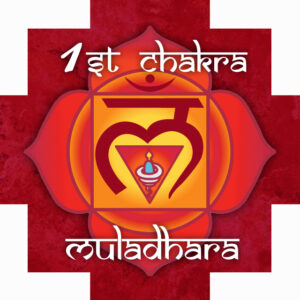 1st Chakra, the Root Base
1st Chakra, the Root Base
The Root Chakra, near the base of the spine and anus, relates to grounding. The energetic element is Earth which has to do with our connection to this planet, as well as to safety, security, stability, and routine. It relates to the most fundamental necessities for survival like having enough to eat, a roof over our heads, and money to make ends meet. It establishes a sense of security and safety. Without these, we find ourselves perpetually and overwhelmingly fearful, unable to settle our nervous systems and focus. When talking about this we use terms such as, ‘I feel like I’m on shaky ground’, ‘I just had the rug pulled out from under me,’ ‘my world got turned upside down.’ We refer to people who need to control all aspects of life in order to feel safe as ‘anal-retentive’ or a ‘tight ass’.
These needs must be met before consciousness can ascend to any higher levels. Loss of a job, divorce, economic turmoil, or global instability can destabilize the routines of our life and create a felt-sense of instability and shakiness.
 I recently had a client experiencing low back pain. Our intake interview revealed that this started during a long drive to visit her family. She had a traumatic childhood so her visits often bring up challenging interactions where she feels the need to defend all her life decisions. When I started to work on her I could feel that her coccyx or tailbone was being pulled under. When we are afraid, just like a scared puppy, the muscles across the floor of the pelvis contract curling our ‘tail’ between our legs. This warps the shape of the pelvic girdle causing structural and physiological maladaptations.
I recently had a client experiencing low back pain. Our intake interview revealed that this started during a long drive to visit her family. She had a traumatic childhood so her visits often bring up challenging interactions where she feels the need to defend all her life decisions. When I started to work on her I could feel that her coccyx or tailbone was being pulled under. When we are afraid, just like a scared puppy, the muscles across the floor of the pelvis contract curling our ‘tail’ between our legs. This warps the shape of the pelvic girdle causing structural and physiological maladaptations.
By contrast, when we experience safety, we can feel our feet planted on the ground, and our knees become soft (not rigid) which drops our center of gravity so we feel connected to the Earth.
GROUNDING EXPLORATION:
You can try this exploration to get a sense of your Root Chakra. Stand with your legs apart and eyes closed. Breath naturally and tune into the feeling of your body in space. Now contract the floor of your pelvis, (like you’re holding back a bowel movement), pulling your anal sphincter up and tail under. Notice your legs, knees, back all tense, and your center of gravity rises. Now, relax. Notice that you automatically exhale, your knees flex slightly, your center of gravity drops, and your feet feel more planted on the ground.
I often see clients who, after a bad fall, feel off-balance and unstable when walking. What happens is that fear of falling again has caused them to brace themself while walking which raises their center of gravity, actually increasing their likelihood of falling again.
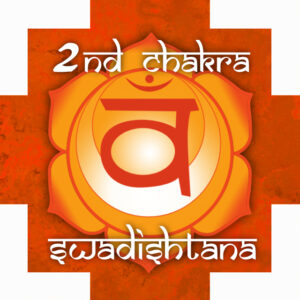 2nd Chakra, the Sacral Center
2nd Chakra, the Sacral Center
The 2nd Chakra, located at a point between the pubic bone in the front and sacral base or lumbosacral juncture in the back, relates to creation and procreation; the expression of our creative energies in all its forms. It also relates to the Water Element.
When our creative energies flow freely, the pelvic bowl can move fluidly; we have grace in our stride and interconnected movements. The sexual energy of this chakra reflects our ability to channel the passion of our Lifeforce constructively.
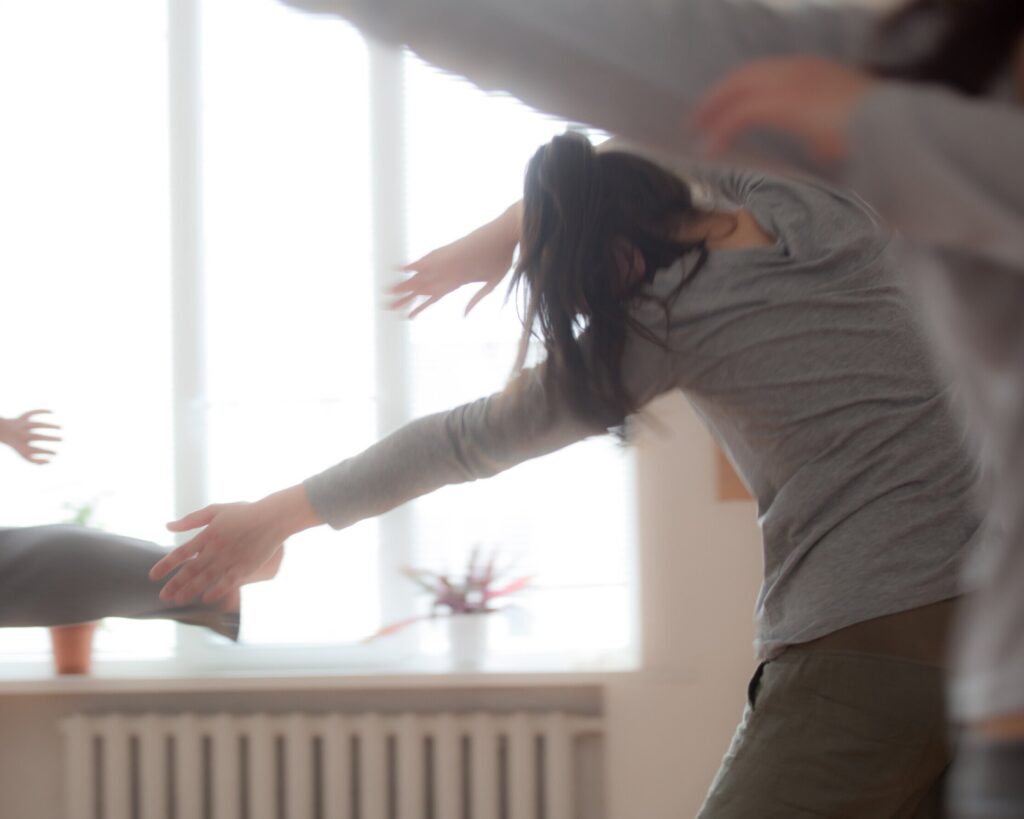 Shame is one of the key emotions that closes down this field, locking down the hip joints and sacral motions: ie. lumbosacral, sacroiliac, and sacral-coccygeal junctures. These affect posture as well as all the organs in the lower abdomen and pelvis. Obviously, the functioning of reproductive organs, but also the bladder, lower large intestine, hip flexors, and hamstrings can all be adversely impacted.
Shame is one of the key emotions that closes down this field, locking down the hip joints and sacral motions: ie. lumbosacral, sacroiliac, and sacral-coccygeal junctures. These affect posture as well as all the organs in the lower abdomen and pelvis. Obviously, the functioning of reproductive organs, but also the bladder, lower large intestine, hip flexors, and hamstrings can all be adversely impacted.
When consciousness flows freely at the Sacral Chakra we experience a playful sense of ‘I’m sexy and I know it’! We’re able to flirt with life, stand in the power of our self-worth, be more fluid with our ideas and beliefs, and allow our emotions to flow. It promotes our overall emotional well-being. This is also the center of compassion and nurturing, reflecting our ability to allow ourselves to be cared for, and to support and encourage others.
The Sanskrit term for this chakra is Swadishtana, Her Favorite Resort. Motivated by pleasure, Swadishtana is centered in our sexual identity and how we respond to the seductive forces of the physical world on all levels. At the Sacral Chakra, we may experience a calm pool within the pelvic bowl, or that water may be set on fire when 3rd Chakra gets involved, driving the fire of our passions to their goal.
When the second chakra is out of balance we can be easily seduced by life’s pleasures, we can be emotionally turbulent, lack creativity, or be obsessed with sex. True intimacy, on the other hand, is only possible when we are secure enough to be vulnerable with ourselves and our partner, feel the power of our uniqueness, and dance with merging and individuating body-consciousness.
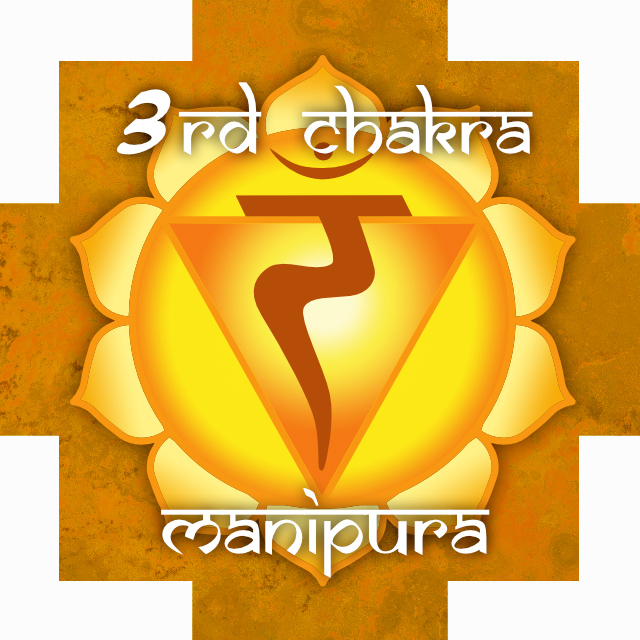 3rd Chakra, the Solar Plexus
3rd Chakra, the Solar Plexus
The 3rd Chakra, which is located at the solar plexus, between the navel and top of the belly in the front and thoracolumbar junction in the back, relates to the Fire Element and power dynamics.
We experience our own sense of power here and clash over who will dominate and who will submit. Clinically, this is the most problematic area across the board for all of us. In our society, culture, and families, we don’t have good role models for healthy relationships to power, struggle, and stress. The lesson of the 3rd Chakra is not about dominance but to stand in our power and empower others to do the same.
 The abdominal cavity encompasses the heart of the digestive system. Every organ has an intrinsic motility (subtle movement) and mobility (movement in relationship to each other).
The abdominal cavity encompasses the heart of the digestive system. Every organ has an intrinsic motility (subtle movement) and mobility (movement in relationship to each other).
In my 5-part blog on Polyvagal Theory, I detailed how the Autonomic Nervous System controls all automatic functions of the body. Unless we are anchored in our Ventral Vagal ‘Safety’ mode, our digestive system is in some level of protective distress. In our modern world, we are seldom in a state of complete inner peace. Work, relationships, and financial concerns can all contribute to persistent unrest. Additionally, if your felt-sense experience of our world is that the ‘lunatics are running the asylum’, how can you ever fully let your guard down.
In a frustrated Sympathetic (Fight or Flight) state the blood flow is shunted away from the core organs to mobilize the big muscle groups to defend ourselves or flee. The secretion of digestive juices and peristaltic motion is drastically reduced. This can lead to chronic indigestion/heartburn, ulcers, eating disorders, and constipation. When the sympathetics get activated we may experience an inner sense of turbulence, agitation, aggravation, jitteriness, or alternatively in exhaustion, collapse.
When we perceive the danger to be life-threatening, we enter overwhelm or Dorsal Vagal (Freeze or Collapse). Here the body prepares for death, we dissociate, and in extreme cases lose control of our bowels and bladder. More commonly it can be the root of conditions like irritable bowel syndrome (IBS) and chronic diarrhea.
 The health of each chakra maintains its corresponding tissue and energy field. Field collapse of the 3rd Chakra follows the contours of the spine. Adrenal fatigue allows the kidney area to lose integrity, increasing the lumbar curve and spilling the belly forwards. This may also be the root of much low back pain, as without field integrity gravity drives the lumbar spine down into the lumbosacral joint.
The health of each chakra maintains its corresponding tissue and energy field. Field collapse of the 3rd Chakra follows the contours of the spine. Adrenal fatigue allows the kidney area to lose integrity, increasing the lumbar curve and spilling the belly forwards. This may also be the root of much low back pain, as without field integrity gravity drives the lumbar spine down into the lumbosacral joint.
The belly is at once the seat of our power and greatest vulnerability. Unlike the organs of our chest and pelvis which are protected by bony structures, the abdominal organs are only protected by muscle. Children experiencing emotional upset, especially around power struggles complain that their tummy hurts. It is also a common ailment of very young children who’ve been sexually assaulted before they are really aware of their genitals, (which are similarly vulnerable). We carry these felt-sense patterns of disempowerment into adulthood which affects the health of this chakra, causing behaviors of either over or under confidence/aggression as compensation.
In health, we radiate self-reliance, a ‘can-do’ attitude. We experience a felt-sense of willpower, vitality, and vigor. With a strong 3rd Chakra energy we are seen as charismatic, drawing every eye in the room. People feel automatically inclined to follow our lead.
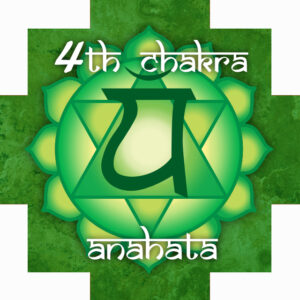 4th Chakra, the Heart
4th Chakra, the Heart
I started this section on chakras talking about the Heart Chakra and Air Element, so here I would simply like to add that the field collapse of this chakra causes the shoulders to roll forwards, the upper chest to fall, accentuating the curves in both the neck and thoracic spine. Try putting your body in this posture and notice your felt-sense of it from the inside. How does it make you feel? What are the emotions that come up? These patterns start energetically, but as the body locks into these shapes, they perpetuate a felt-sense that keeps us feeling and thinking that same way.
An alternative ‘Freeze’ protection response, which might happen when we are afraid to be hurt by love or conflicted about our feelings, can decrease the thoracic curve, inhibiting flexibility of the dorsal spine and holding it rigid and braced. This may be accompanied by a restricted movement of the diaphragm, thoracic inlet (across the shoulder girdle), and movement of the lungs.
Our body sensations here at the Heart Cakra are linked to joy, happiness, and love which often are experienced as an upwelling and expansion or like champagne bubbles rising. Conversely, we may experience a zig-zagging energy going in multiple directions at once, or stabbing pain in the heart, back, or shoulder.
Continue reading. Go to Chakras & Felt-Sense – 2
Resources:
- Also go to Chakras & Transformation
- Polyvagal Theory – Parts 1 to 5
- Resourcing: Meeting Life’s Challenges
Footnotes:
David I. Rome, Your Body Knows the Answer: Using Your Felt Sense to Solve Problems, Effect Change, and Liberate Creativity
Disclaimer:
The information featured on this site is provided for information and education purposes only and is not intended to replace the advice of your doctor or health care provider on medical and/or health-related issues.
You should not use the information on this site for diagnosis or treatment of any health problem or as a substitute for medication or other treatment prescribed by your physician or health care provider.

